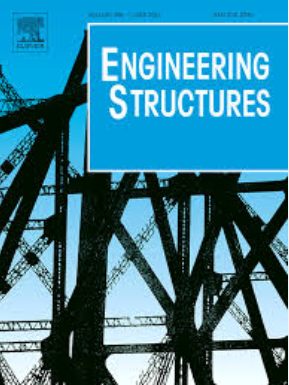Vibration performance of CLT and CLT-concrete composite floors supported by glulam beams under human activity in mass timber office buildings
IF 5.6
1区 工程技术
Q1 ENGINEERING, CIVIL
引用次数: 0
Abstract
Timber floors are susceptible to vibration due to their low mass and bending stiffness. Utilizing mass timber products in long-span scenarios, such as in office buildings, makes vibration an important design driver for structural engineers. To gain insight on the vibration performance of mass timber and timber-composite floors in real mass timber buildings, a comprehensive testing campaign was conducted on two mass timber office buildings. The measured data were compared and discussed according to various standards and design guides at the end. Although some discrepancies between estimated parameters and measurements were noted, the floors reasonably meet their desired performance objectives for office buildings according to existing standards. The results presented in this paper not only demonstrate the effect of human weight and walking path on the floor’s response, but also provide important data on mass timber floor system performance in furnished buildings, which is not otherwise available in the literature.
求助全文
约1分钟内获得全文
求助全文
来源期刊

Engineering Structures
工程技术-工程:土木
CiteScore
10.20
自引率
14.50%
发文量
1385
审稿时长
67 days
期刊介绍:
Engineering Structures provides a forum for a broad blend of scientific and technical papers to reflect the evolving needs of the structural engineering and structural mechanics communities. Particularly welcome are contributions dealing with applications of structural engineering and mechanics principles in all areas of technology. The journal aspires to a broad and integrated coverage of the effects of dynamic loadings and of the modelling techniques whereby the structural response to these loadings may be computed.
The scope of Engineering Structures encompasses, but is not restricted to, the following areas: infrastructure engineering; earthquake engineering; structure-fluid-soil interaction; wind engineering; fire engineering; blast engineering; structural reliability/stability; life assessment/integrity; structural health monitoring; multi-hazard engineering; structural dynamics; optimization; expert systems; experimental modelling; performance-based design; multiscale analysis; value engineering.
Topics of interest include: tall buildings; innovative structures; environmentally responsive structures; bridges; stadiums; commercial and public buildings; transmission towers; television and telecommunication masts; foldable structures; cooling towers; plates and shells; suspension structures; protective structures; smart structures; nuclear reactors; dams; pressure vessels; pipelines; tunnels.
Engineering Structures also publishes review articles, short communications and discussions, book reviews, and a diary on international events related to any aspect of structural engineering.
 求助内容:
求助内容: 应助结果提醒方式:
应助结果提醒方式:


